-
Self-diagnostic tests contain a protein that reacts to covid and another that reacts to the liquid of the solution
The self-diagnostic test, which these days are used every other day to find out if that sore throat or cough is covid, to find out if you are infected after having contact with a positive or as another precautionary element before a celebration, they contain very simple mechanism but with years of research behind. On the outside they are made of a plastic casing with holes. And inside they have a cellulose strip which contains a separation and characterization technique that is frequently used by chemists and is called chromatography. It seems complex, but it is not so, here we explain all the parts of the nose test (which are the most frequent and tested) and how each of them works
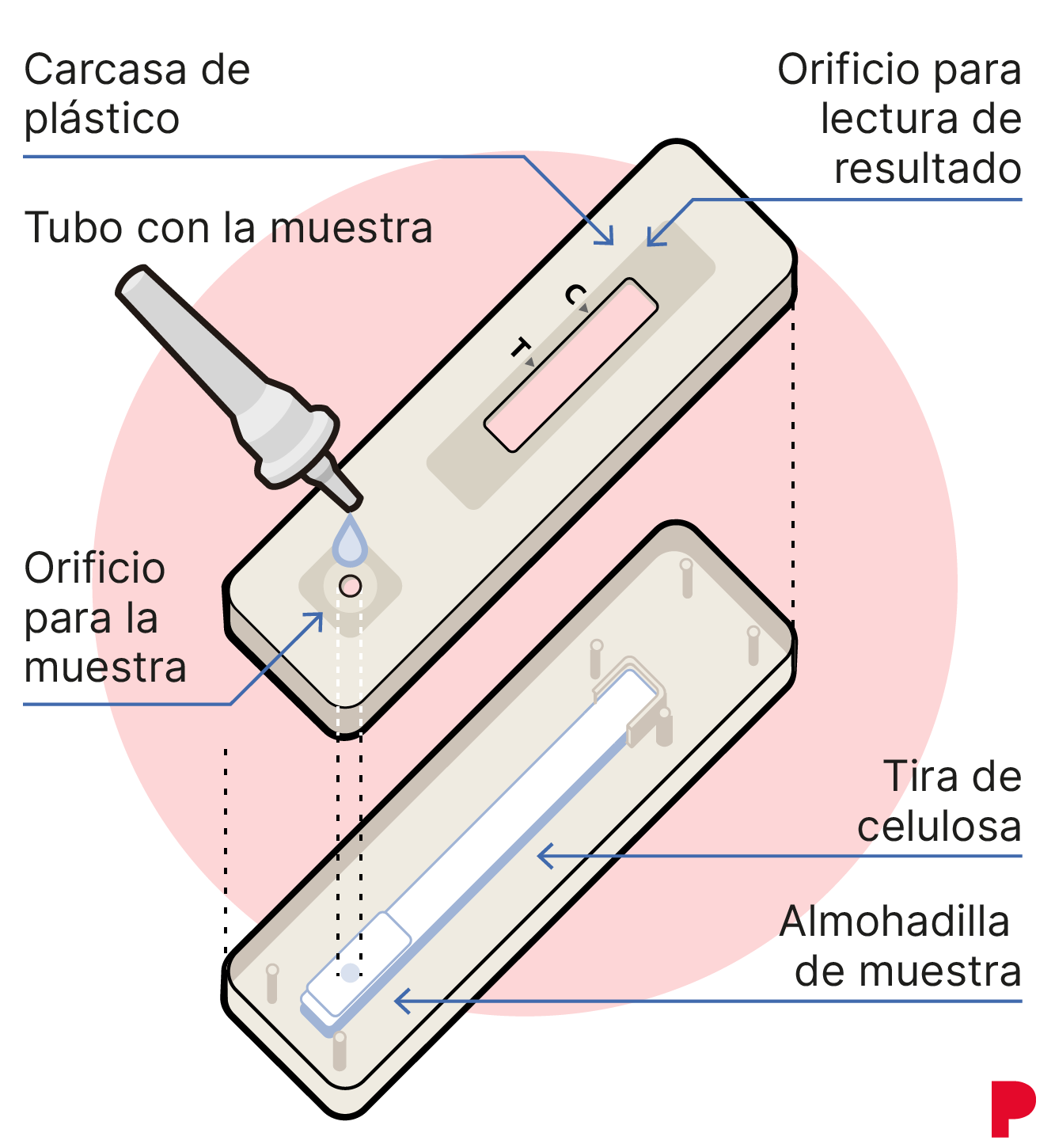

positive line

positive line
That strip of cellulose (similar to paper) that is inside the plastic casing contains, at the height where it is shown if the result is positive or negative (indicated with a T), a antibody which reacts when it comes into contact with one of the antigens specific to the coronavirus. “Both proteins bind like a key in a lock,” explains Deborah Garcia Bello, chemist and science popularizer. In turn, the antibody is associated with a pigment called chromophore that causes that if it comes into contact with the virus, it changes color and shows the dreaded little line that indicates that the test result is positive.
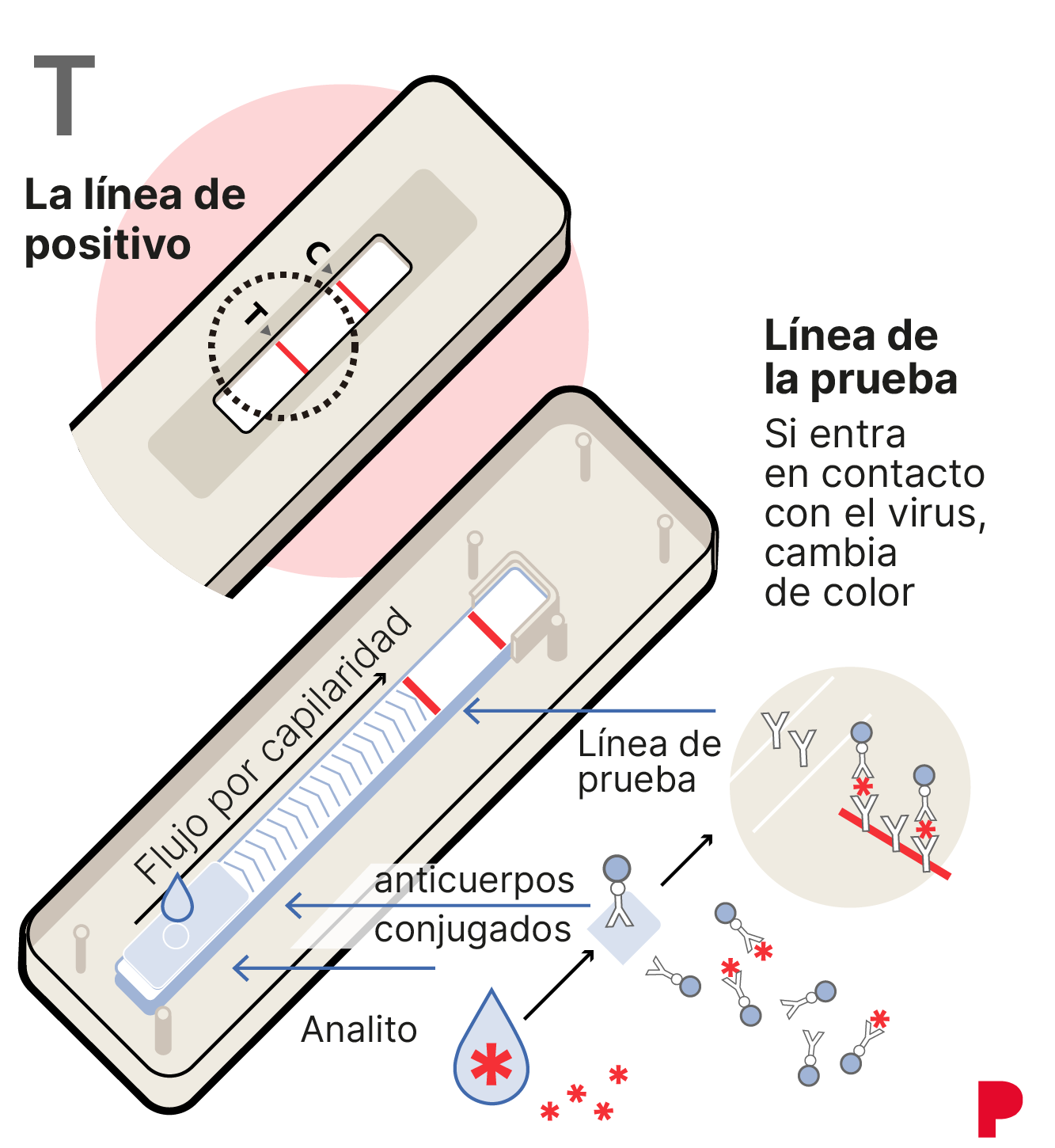

control line

control line
In the so-called control line, which indicates whether the test has been carried out correctly (marked with a C), the operation is similar. In that part of the cellulose strip there is another antibody (different from those that link to covid) that reacts to an antigen that is in the dissolution, that liquid where the swab is inserted, which in some tests comes already inside a plastic tube and in others in a separate dropper that must be poured into the plastic tube and mixed with the swab then inserted into the nose.
When the control line changes color (since the antibody is also associated with a pigment) “it means that the test has been done correctly and that the device and the solution are in good condition“, adds Garcia Bello.
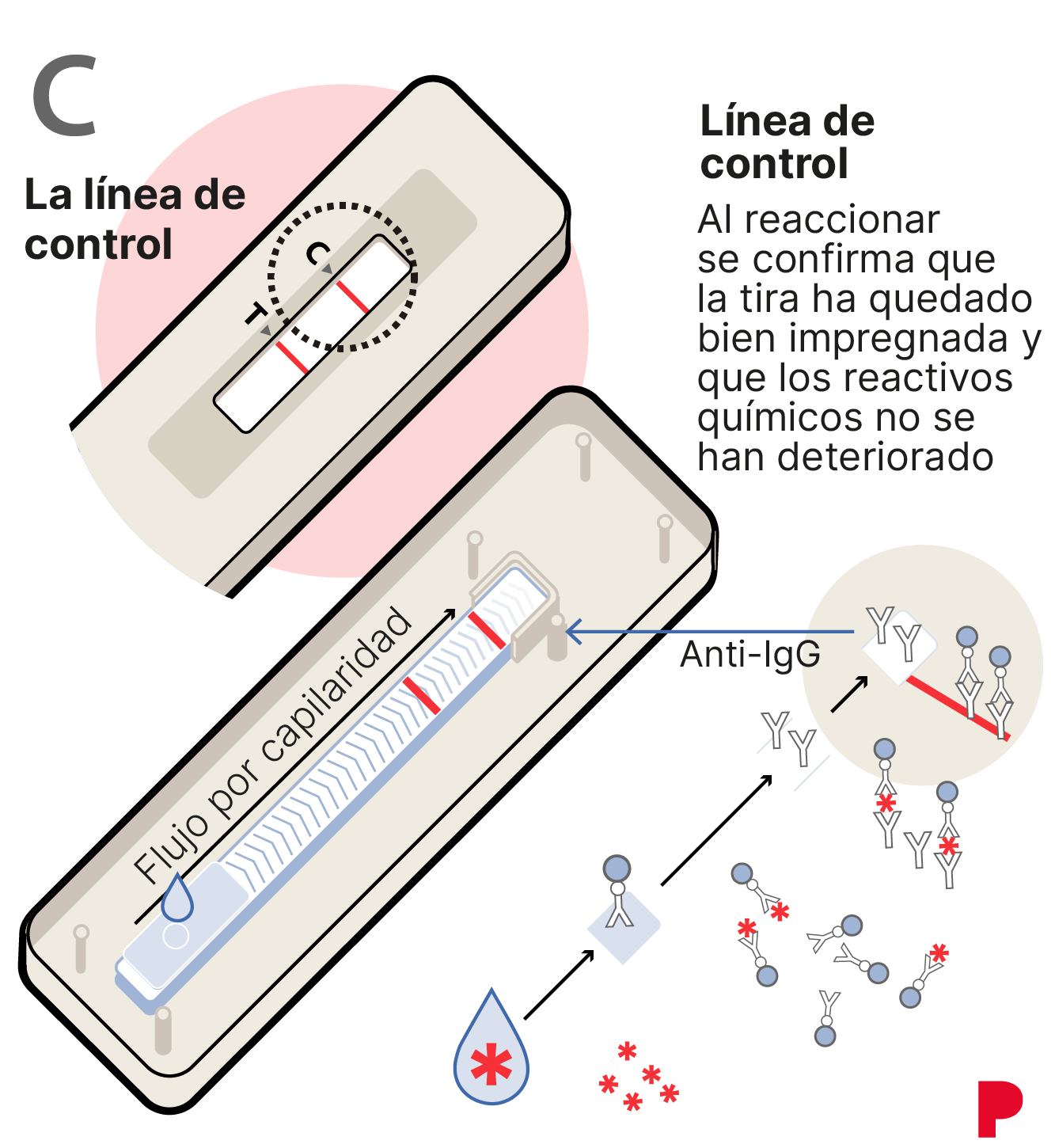

the dissolution

the dissolution
Another important part of these tests is the “buffer solution” which not only contains the antigen that reacts with the antibody in the control line, but also fulfills two other functions: on the one hand, it allows the cellulose strip to is impregnated little by little and serves as a “buffer”, that is, to maintain the stable pH. “This is important,” the specialist points out, “because the proteins, that is, the antibodies and antigens contained in the tests, are very sensitive to variations in pH. If it is modified, the proteins twist, change shape and consequently do not link, which can cause false positives or false negatives”. This also occurs, according to García Bello, with temperature changes, so it is necessary to preserve the tests from extreme temperatures.
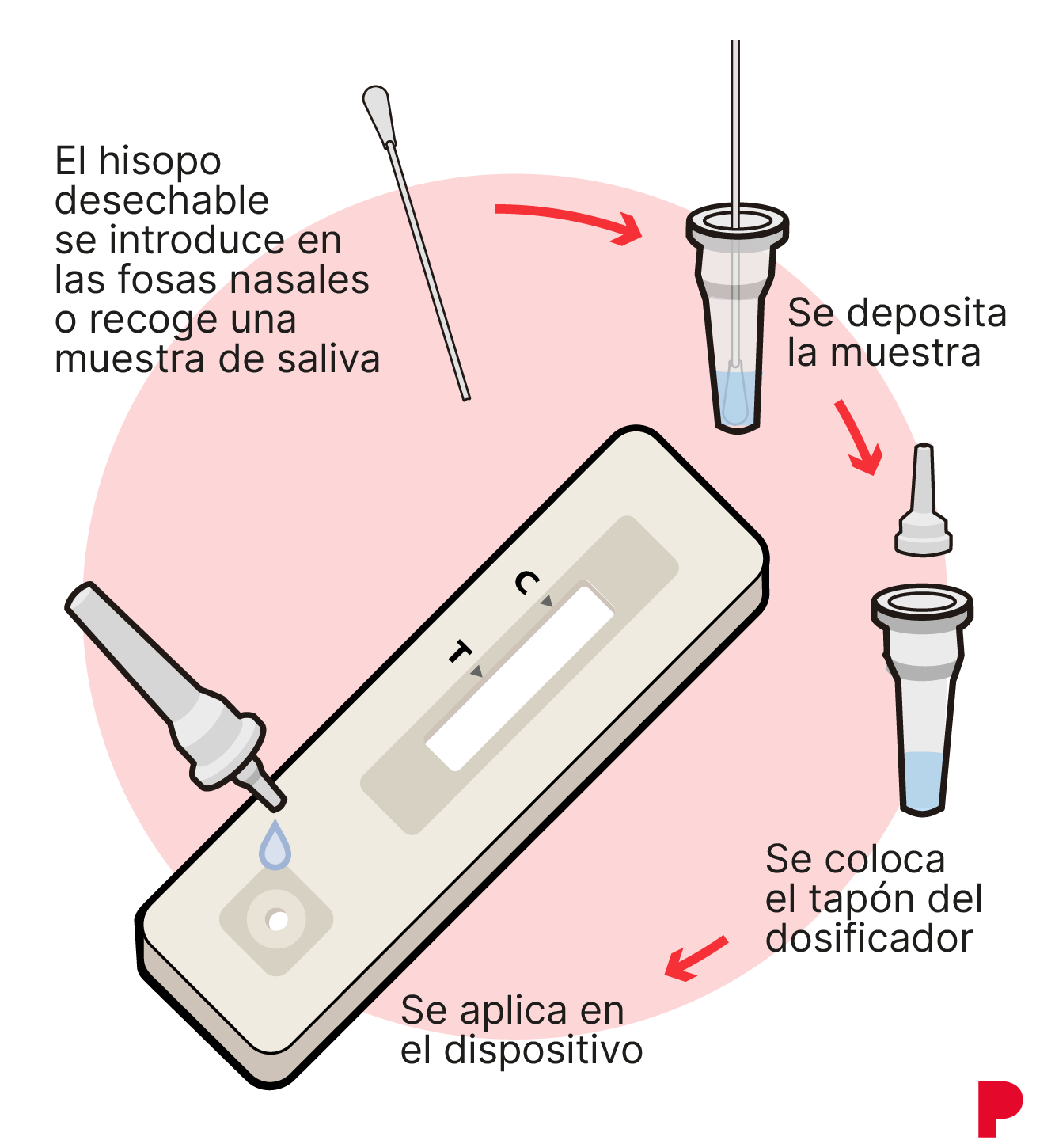

hyssop

hyssop
The hyssop is nothing more than a plastic stick with a cotton at one end and comes in a plastic bag, like the rest of the components because it is sterilized. That is why it is important to wash your hands well before using it, so as not to contaminate the test parts.

Result Types

Result Types
Related news
The tests can give result positive; a negative result (when the line marked with a T does not change color, it remains blank) or they may be invalid. In the latter case, neither of the two indicators may change color or only the T indicator changes color but not the control line, which would indicate that the test is poorly done or that some of its parts have been altered and therefore the result is not reliable. These days proliferate in the social networks positive test with orange juice and other drinks to try to question the reliability of these tests. But their results are invalid since with these liquids the pH is destabilized and, therefore, the antibody can react but not because it is against the covid.
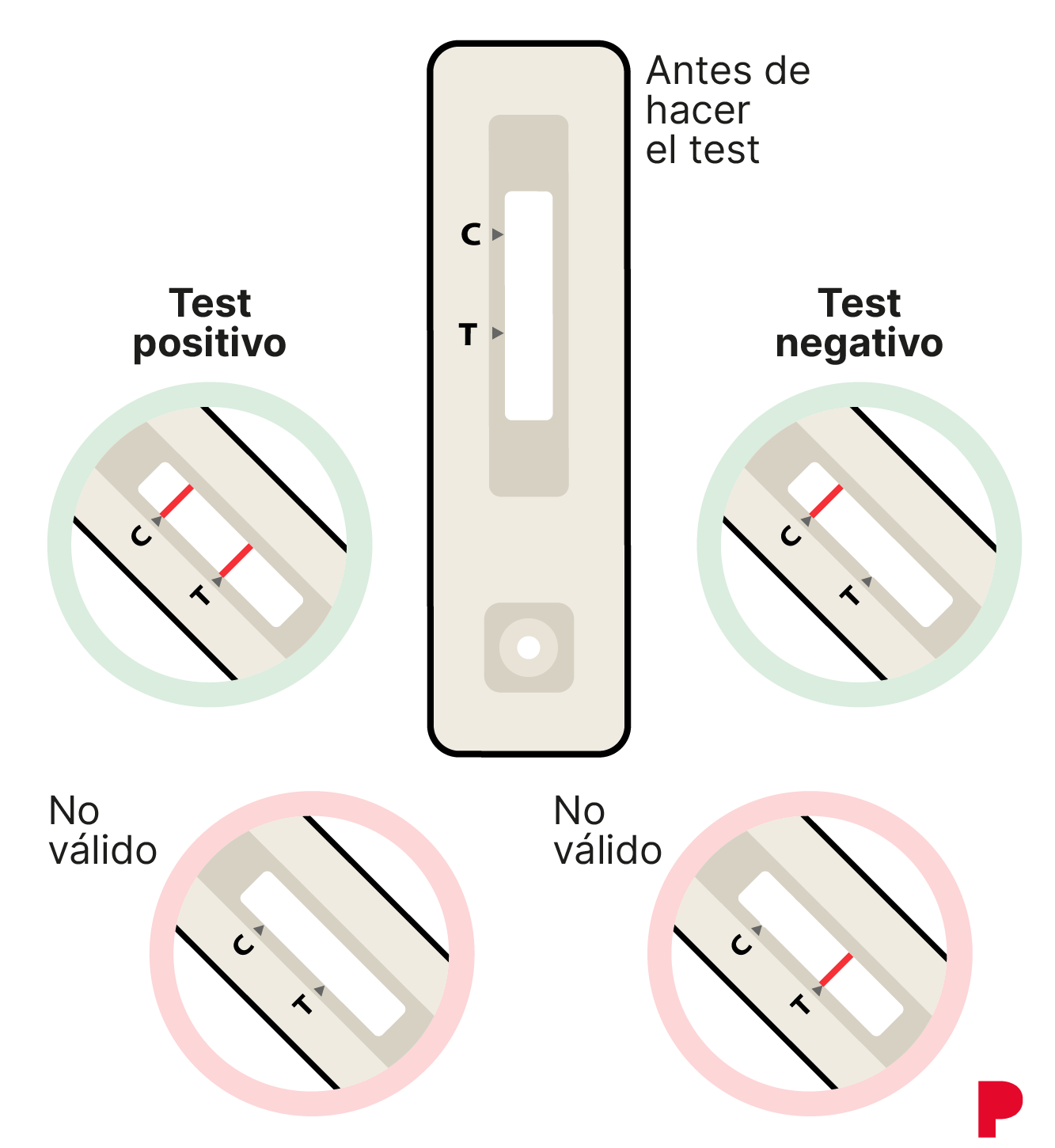
Reference-www.elperiodico.com